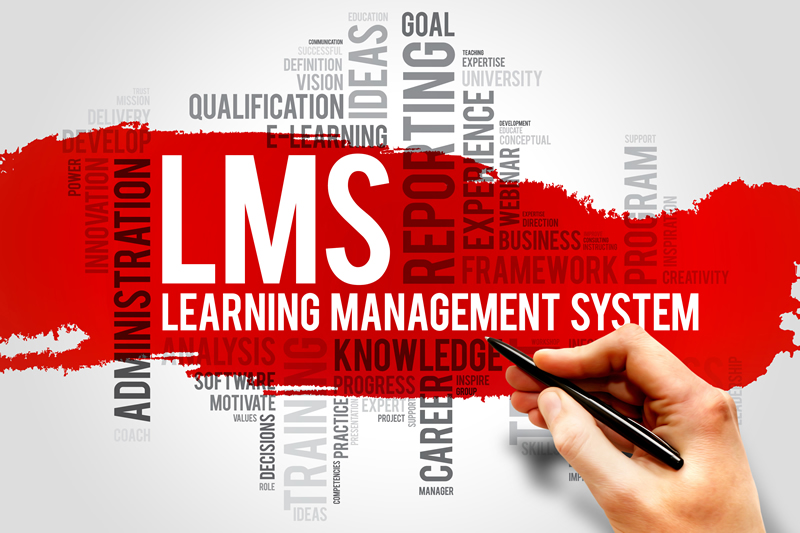ATD Blog
The 10 Commandments of Implementing an LMS
Mon Oct 26 2015

In our increasingly dynamic business landscape, enabling an agile learning culture is critical to achieving any sort of success. To that end, organizations proactively pursue best-in-class learning management systems (LMSs) to support their learning needs. Fortunately, we have seen several new LMSs enter the market in recent years. Although most LMSs come with a general set of promises (and almost all sound exceptional), the real reward lies in your specific implementation.
Our journey in implementing a cloud-based LMS recently led Genpact to uncover some significant insights. So, if you are planning an LMS implementation for a large global organization, here are our 10 commandments for achieving success.
#1: Align With the Organization's Strategy
Any enterprise-wide change, such as an LMS implementation, is best executed when it aligns with the larger organizational strategy. At Genpact, organizational strategy is defined by what we call “SynerG.” This is our business transformation project, and it aims to standardize and simplify our internal processes. The need for a best-in-class LMS emerged as a critical approach for meeting the immediate needs of the business transformation journey.
#2: Listen to the Business Need
To ensure that our chosen LMS was most relevant to our organizational context, we focused on keeping all stakeholders involved in the decision-making process. Be sure that everyone understands the business need, and identify an LMS that promises to meet those needs. LMSs are a dime a dozen in the market, and this can be confusing considering you are not making a small investment.
#3: Create Your Business Requirements Document
The business requirement document (BRD) is the master book of requirements that will contain functional and business requirements, expectations from the end-user, and the training administration team.
#4: Prioritize Your Need; Identify What Is Business Critical for You
Give weight to user experience and system functionality, per business requirement). Also keep in mind specific ease-of-use issues (such as will this be a self-service application). These sorts of actors will help you identify critical criteria for selecting the tool.
#5: Revisit the As-Is Process Maps and the BRD
Throughout the project journey, revisit the process maps and functional requirements to ensure that the LMS implementation is on track. Use them as guiding principles. More importantly, use them to prioritize requirements (evaluate what was needed now or later) and what functionalities are must have, good to have, and no need to have.
#6: Evaluate the LMS for Future Integration
The beginning of the implementation is the right time to assess your shortlisted tools for compatibility with other tools already used by the organization. For example, assess how easy or difficult it will be to integrate the new LMS with other performance tools, authoring tools, and so forth used by other functions in the training and development function. Evaluate the scope of the existing integration (other tools and applications that need to connect to the LMS) to ensure zero business impact when the new LMS goes live for end users.
#7: Check for Content Readiness
Take a moment and spend time assessing the format, version, and so forth of your existing online courses. This is especially important if the legacy LMS has been in use for a long time. Technology undergoes change much faster than behavioral training material; therefore, unless the technology is checked in time, the team may be in for a big surprise during implementation.
#8: Take Your Time Identifying the Team
The first rule of an effective team is a solid partnership between the technology and learning teams. Add to that, the chosen team players must be dedicated. This is critical for successful LMS implementation. For an enterprise-wide implementation, there has to be a hub-and-spoke relationship between the project core teams and single point of contact representation for all businesses globally.
#9: Don't lose sight of branding and change management
A new LMS will require push for adoption (just like any other change effort). To help you on your way, focus on branding. Make the new LMS aspirational and align it to what its users identify best with on a daily basis. Give the LMS an identity and talk about its personality and how it will change life for better for the end-user. Top that with a structured change management plan that will primarily focus on addressing three needs: Drive communication during implementation phase to drive change. Drive common message for enterprise-wide launch Continue to drive user adoption post launch.
#10: Have your post-implementation framework in place
The LMS implementation does not end at launch. Instead, it is merely the beginning of the journey. The success of a new LMS depends on how much value the system continues to bring to end-users—and such value is reaped over time. Be sure to create the near-term adoption plan (spread over six to nine months post-launch) to stabilize and penetrate the LMS in all things critical, as well as a long-term optimization plan (to be initiated nine months after the launch) to enhance the user experience and continue to leverage the LMS functionalities better.
These 10 commandments are a result of our experience with the enterprise launch of a new cloud-based LMS for our global audience. While these are suggested points to ponder, what will really work best is if you look at the implementation in the context of your business and the industry in which your business operates.
